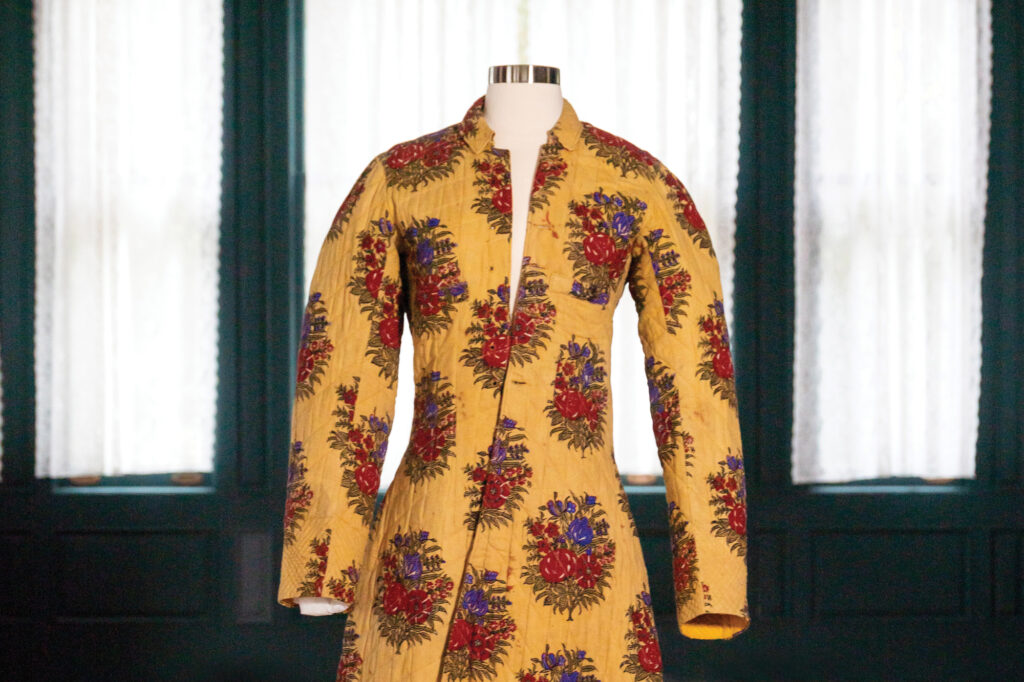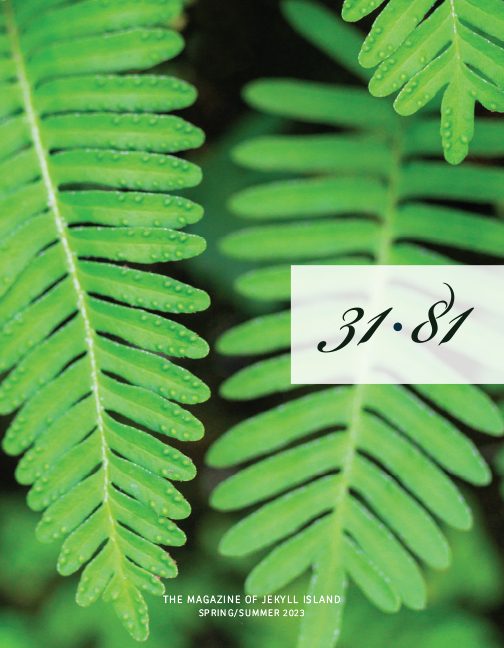What’s a rare 19th-century Chinese imperialist robe doing on Jekyll Island?
BY MARY LOGAN BIKOFF
PHOTOGRAPHY BY BRIAN AUSTIN LEE
Collecting Asian art was all the rage in upper-crust society from the Gilded Age through the 1920s. Spurred in part by the Aesthetic movement of the late 19th century, which championed “art for art’s sake” and distant travel, a lust for “exotic” cultures arose. So came a flood of blue-and-white porcelain, hand-painted nature motifs, and lacquered furniture from Asia into the homes of the American elite—like those who vacationed at the Jekyll Island Club. The result is a small but significant collection of historical Asian art and objects at Mosaic, Jekyll Island Museum.
“At the time, the whole world had a fascination with Asian art,” says Faith Plazarin, archivist and records manager at the Jekyll Island Authority, who is currently cataloging these works for a possible exhibition. “Jekyll was a localized piece of this world. It reflects what was going on at the time, demonstrating this fascination with traveling and collecting.”
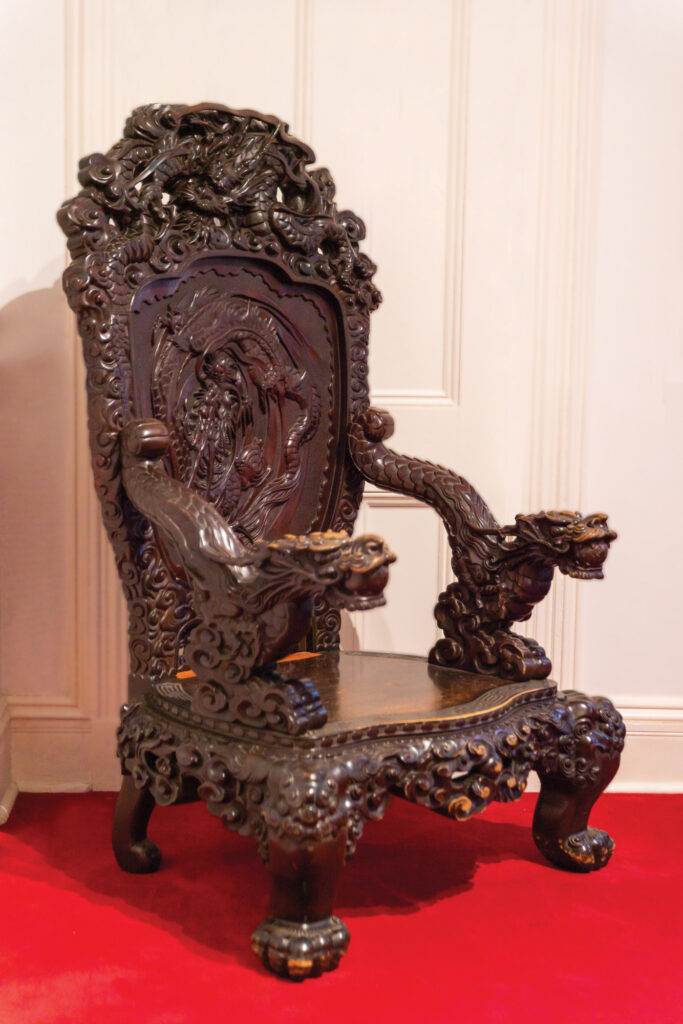
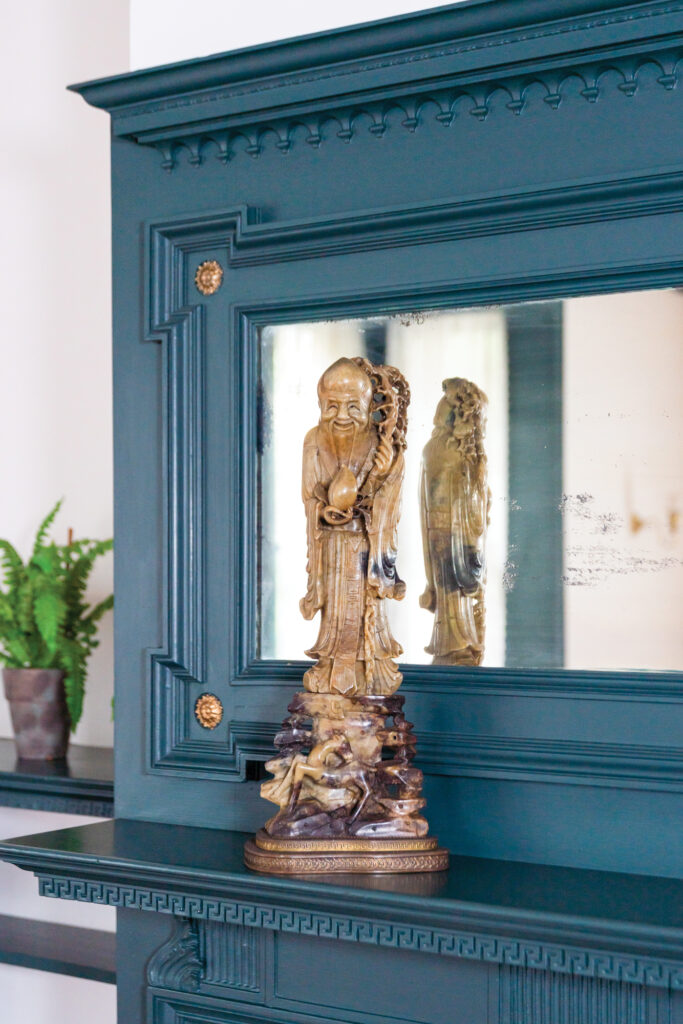
The allure of Asia and Asian art has a long history on Jekyll. The original Jekyll Island Museum, which opened in 1954, showcased the tradition with an intricately carved, ancient-looking “Chinese Wishing Chair,” the brainchild of original curator Tallu Fish. The massive wooden chair, stained or painted to resemble ebony, was replete with carvings of clouds, dragons, and monsters. For 25 cents, visitors could sit on the chair and make a wish. Generations of island guests have been photographed in the chair, which can still be seen on guided tours of Indian Mound Cottage today.
The first Asia-centric collections on island were perhaps best typified by those of the Jennings family, who spent winters at Jekyll’s Villa Ospo in the 1920s and were well-known for their annual treks abroad. Walter Jennings, a Standard Oil Company executive, and his wife Jean were prolific collectors of Chinese porcelain and other objects. Their diaries document trips to Europe, Egypt, India, and China in the early 20th century. Their collections were bestowed to their youngest child, Constance Jennings Ely, and then to her daughter, Day Ely Ravenscroft, who donated them to the Jekyll Island Museum before her death in 2012.
“They took really good care of their things, too,” says Plazarin. “This collection came with a long note explaining some of the materials.”
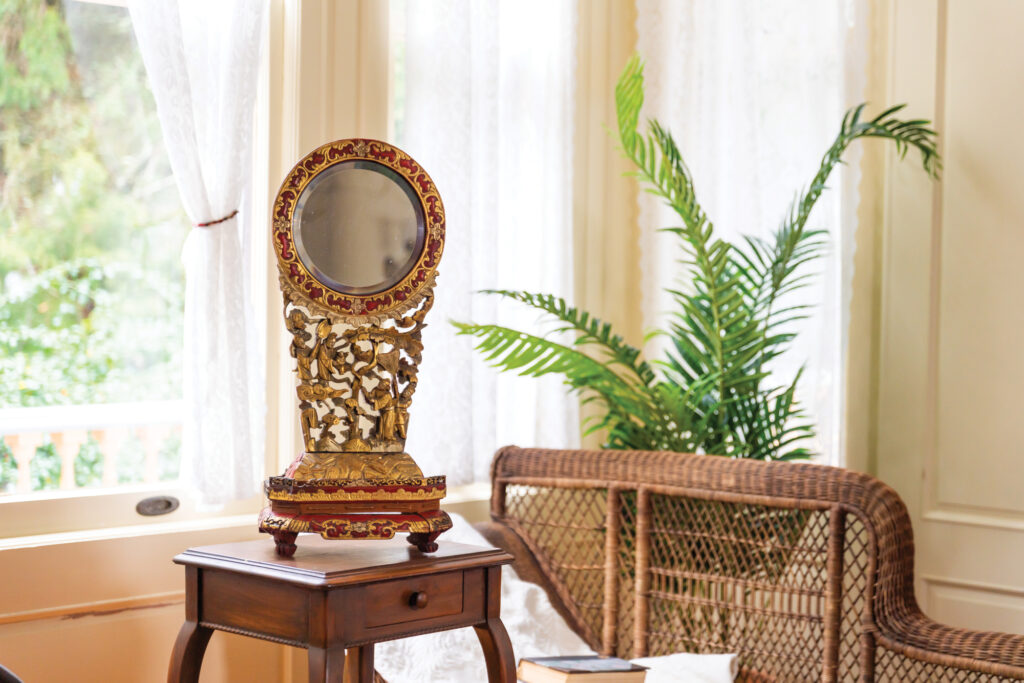
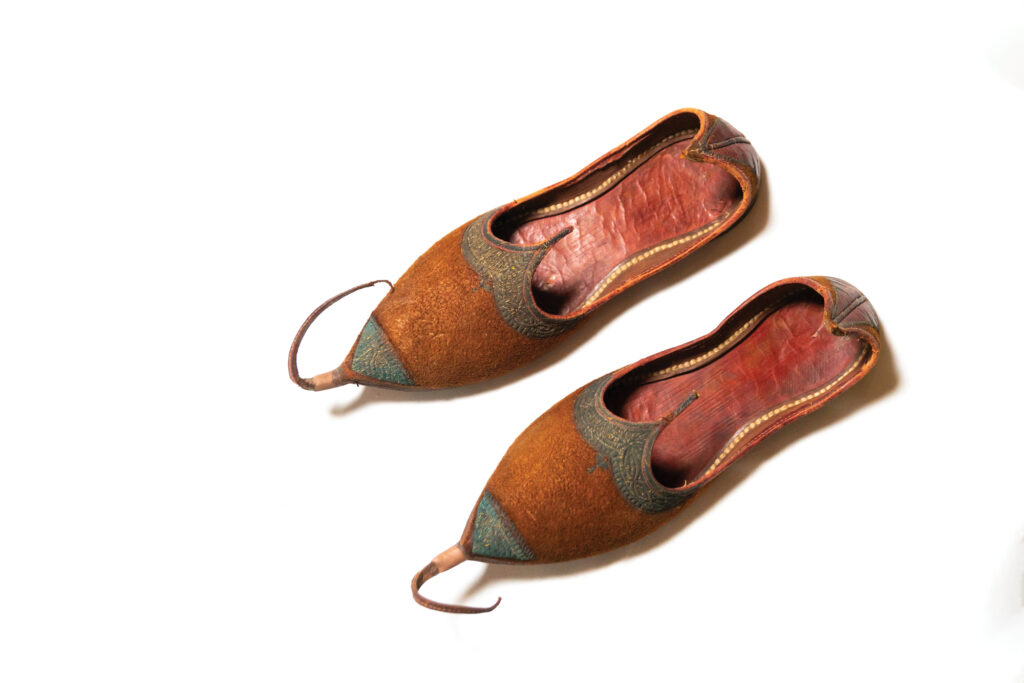
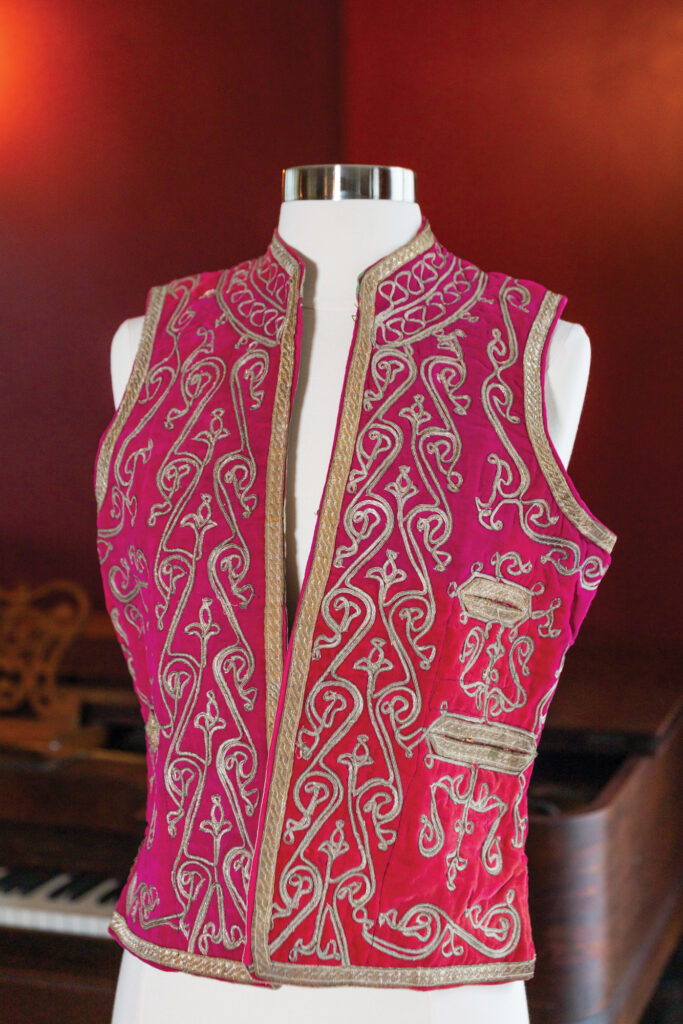
One spectacular piece from that trove is a silk robe brought from China in 1922 that features elaborate stitching of figures and landscapes. Woven with gold thread that glitters, the highly decorated sleeve cuffs were embroidered with a traditional needlepoint technique known as the “court stitch” or the “forbidden stitch,” so detailed and intricate it was said to blind the craftsperson and thus was outlawed. (More likely, it was named so because the emperor, whose palace was known as the Forbidden City, wanted the most beautiful embroidery for himself.)
According to Ravenscroft’s notes, the garments were worn extensively by her mother despite their fine nature. “Victorians did whatever they felt like,” she writes. “So they could use their items that we would put in a museum.” Still, at some point, the cuffs with the forbidden stitch were removed and one was framed alongside a hand fan with ivory sticks and embroidered silk leaves. (Ely may have replaced the prized sleeves so that she could wear the robe—and she did, until 1985.)
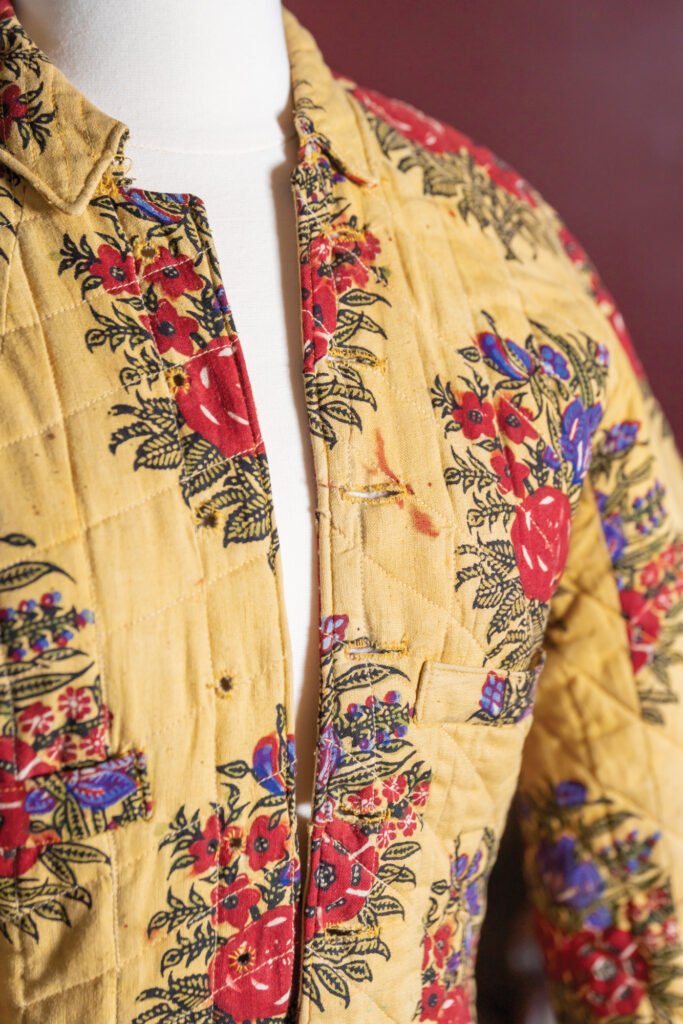
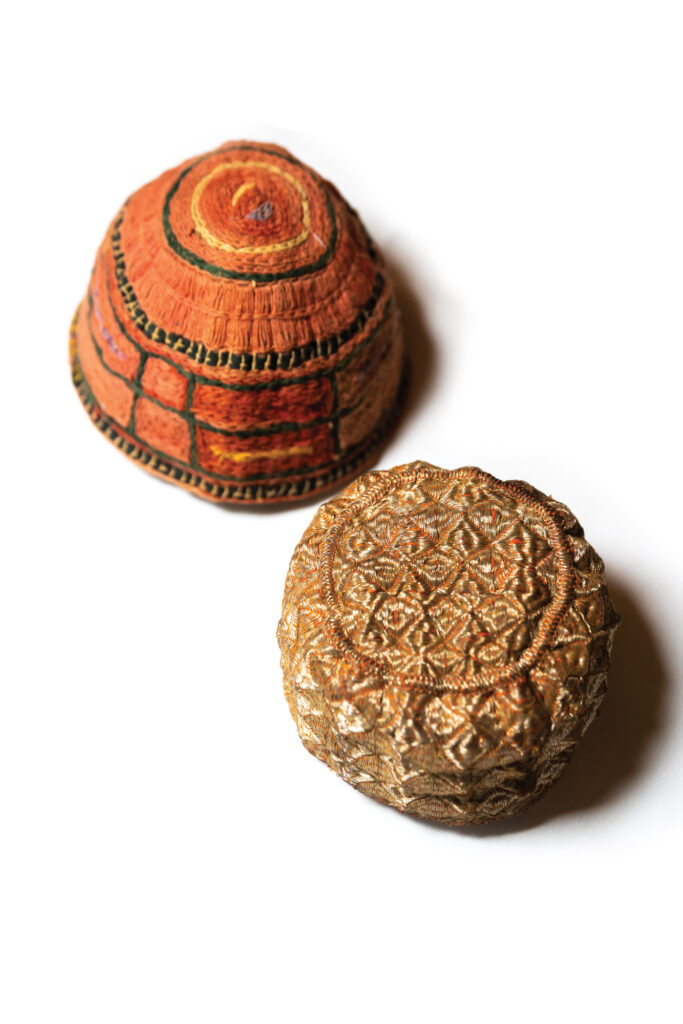
gold skullcap, both from the Ravenscroft
Collection.
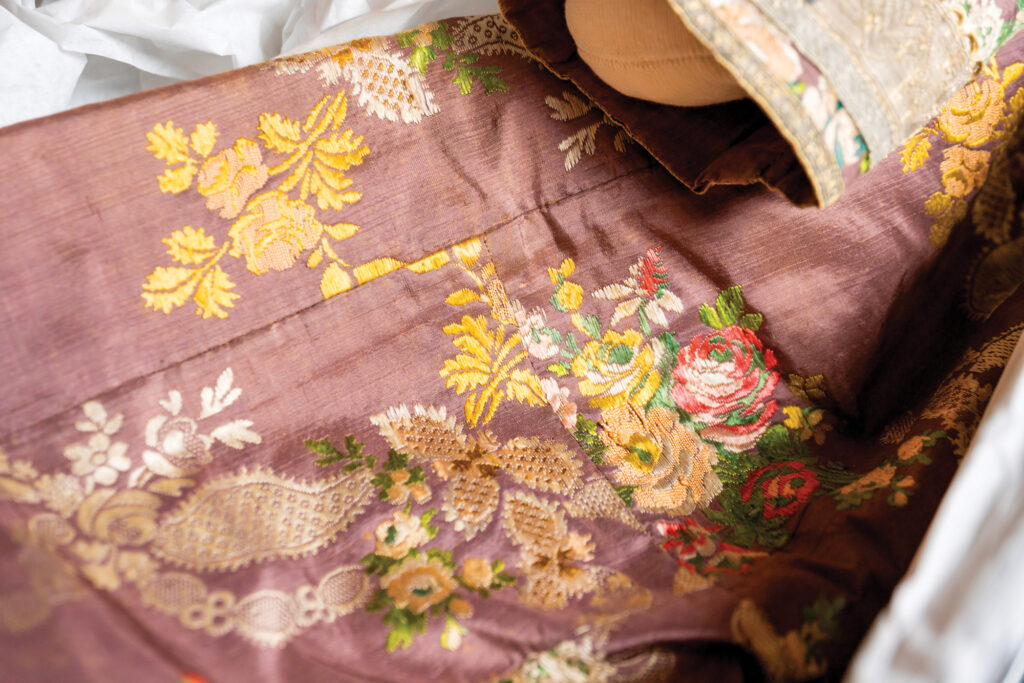
Also in the Jennings family collection were two robes purchased on a 1926 trip to India, leather and gold shoes, and a gold embroidered turban and cap. The family displayed these fashions—as well as exquisite saris since donated to a museum in Mumbai—at their annual Christmas costume party, captured in a grainy black and white photograph. Walter dons a purple and gold brocade coat stitched with flowers and ribbon from North India that his daughter Constance later wore regularly as an evening jacket. His son Oliver wears a yellow cotton quilted coat with a floral pattern and rogue betel juice stains, purportedly where the tailor “missed the spittoon,” it says in Ravenscroft’s notes.
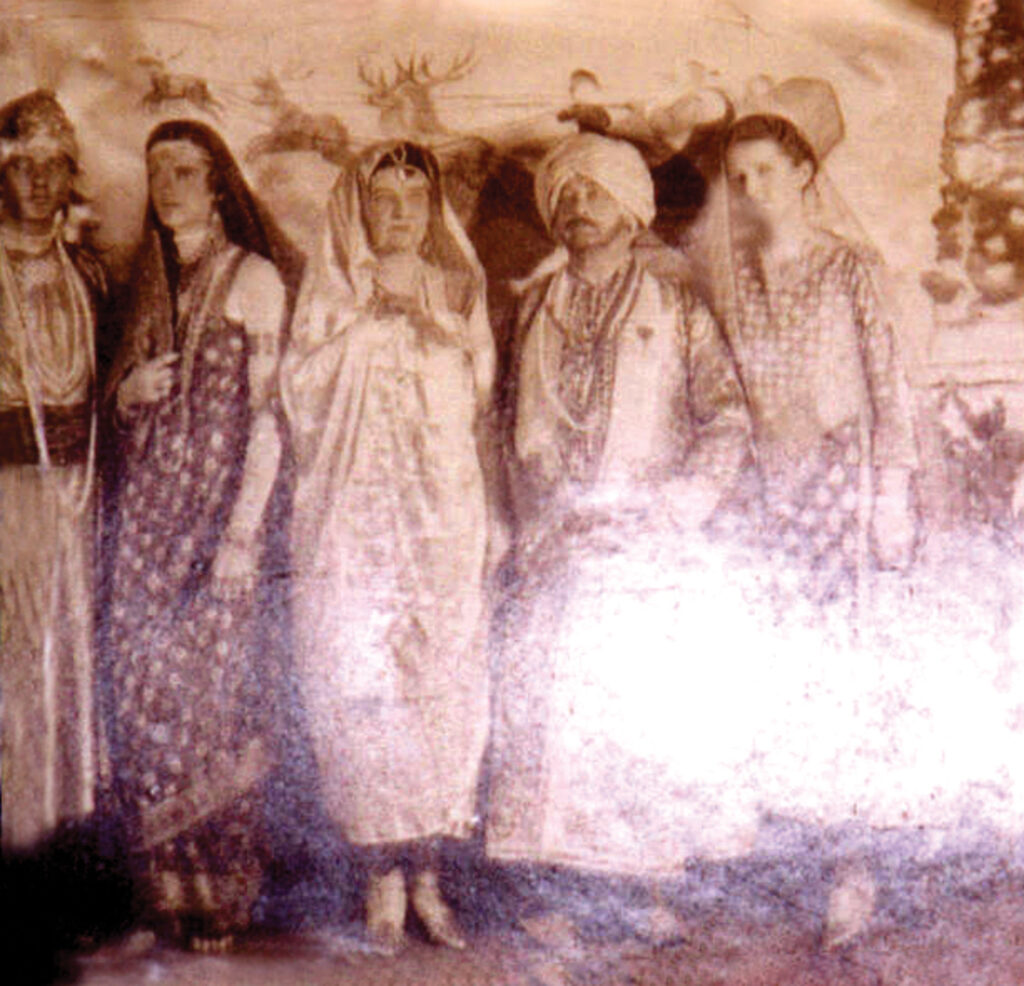
The costumed affair points now to Americans’ myopic perception of the world at the time. “They didn’t see cultural sensitivity in the same way we do now,” notes Plazarin.
The fascination with Asia ran deep in the Jennings family. They likely would have been aware of the collection of Asian art by their cousin, Abby Aldrich Rockefeller, during the same era. Rockefeller, who had ties to Jekyll on both sides of her family, went on to co-found the Museum of Modern Art in New York. Her son, John D. Rockefeller III, founded the Asia Society.
Restoring century-old Chinese wallpaper
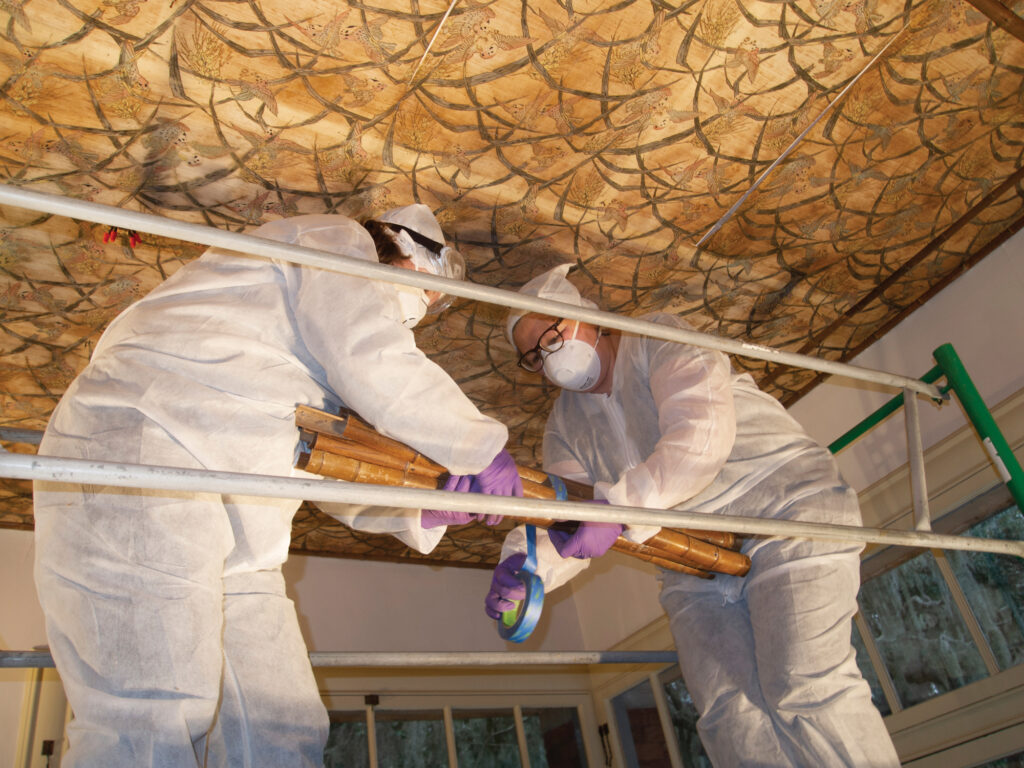
original wallpaper, preparing it to be archived.
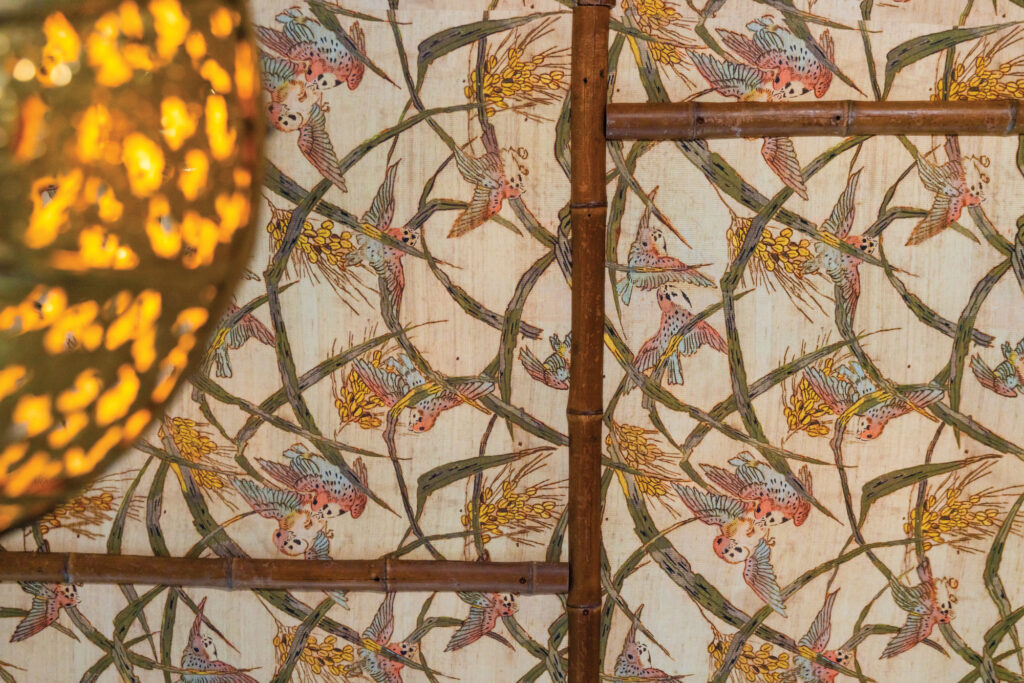
Other significant pieces in the Jekyll Island collection include a jade-colored soapstone sculpture and lacquered furniture passed down from the playwright Eugene O’Neill, who lived on neighboring Sea Island from 1932 to 1936. None of the Jennings’ original furniture remains on Jekyll, but various antique Asian vessels were left on the island when it transferred hands to the state. These sit today on display at Villa Ospo, often seen by wedding parties renting the cottage.
- A team of three preservationists spent several days removing the original paper, which was confirmed to contain lead, arsenic, and other toxins. Clad in protective gear and armed with spatulas and scalpels, the team carefully scraped the paper onto foam rolls. The bamboo rods around the panels were mapped and tagged so they could be reinstalled in exactly the original manner. Salvageable panels were cleaned, photographed, and archived at Jekyll Island.
- The section of paper in the best condition was sent to the NEDCC lab in Andover, Massachusetts, cleaned with brushes and sponges, and documented photographically and in writing. Because of its fragility, a traditional Japanese adhesive, funori, was applied. The section was blotter-washed and gently humidified and bleached to remove stains. Tears were repaired with toned Japanese paper and wheat starch paste.
- Collections photographers then took overlapping images of the panel, stitching it together meticulously in Photoshop. Individual motif elements were restored digitally, using sections that were protected behind bamboo for color testing.
- The pattern for installation was then reconstructed to ensure seamless repeats of the motif.
- The Jekyll Island Authority decided to enlist a local wallpaper hanger to install the reproduced paper rather than conservators, so tests were performed to find a suitable paper that would resist print fade and be durable enough to hang.
- The NEDCC then printed 1,555 square feet of panels, enough for all four walls and the ceiling. So far, only the ceiling panels have been installed, showing visitors what the paper would have looked like when it rolled out in 1900. The best-preserved, archivally framed original panel is on view in the conservatory.
